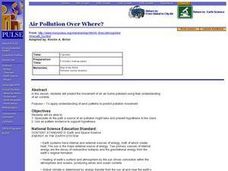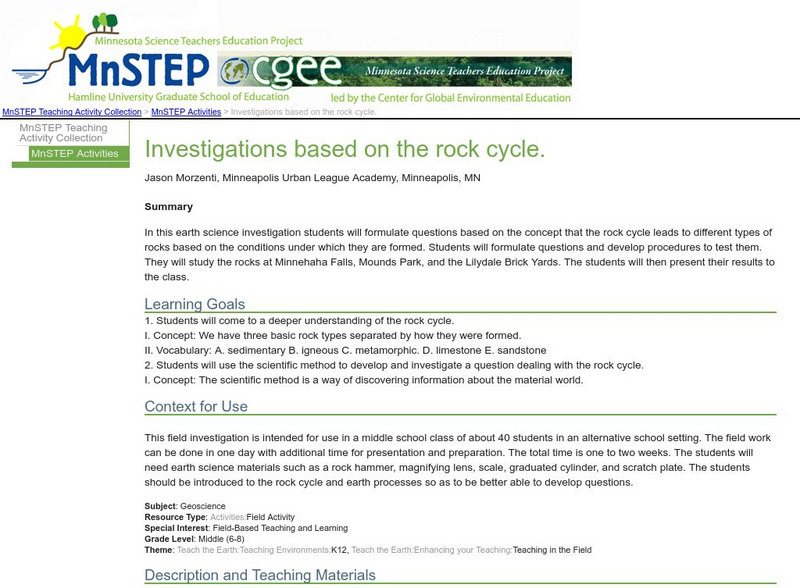Curated OER
Forces in Action
Students investigate different forces and draw arrows to signify specific directions of force. Students are then shown a brick and they are asked to draw a diagram which will include labels for the forces that are acting on the brick....
Curated OER
Reversible and irreversible changes
Students define the words "reversible" and "irreversible." They complete a worksheet that shows a number of changes. Students must decide which are reversible and which are irreversible.
Curated OER
Changing Circuits
Students observe an on-line activity to review the basics of electrical circuitry, then research answers to related questions on-line.In this lesson on changing components in a series circuit, students discover how different components...
Curated OER
Informational Reading: Electronics Are Made from Resources
In this comprehension worksheet, students read about the making of a computer: circuit boards, hard drives, monitors and plastic housings. Students then answer 3 multiples choice questions.
Curated OER
Technology has a Solution!
In this technology worksheet, students summarize four things they learned about technology and the environment. Students then write a report that outlines how technology is solving environmental issues.
Curated OER
A Look at the Life That Electronics Lead
In this comprehension worksheet, learners fill in ways on a graphic organizer that people or companies can conserve energy, reduce waste or minimize the impact to the environment. Next, students solve 3 "environmental" math word problems.
Curated OER
Micro-organisms
Students discuss micro-organisms. In this micro-organisms lesson, students identify which micro-organisms are harmful and which ones are beneficial. Students complete a worksheet which is included in the lesson.
Curated OER
Frozen Film
Students discover how light reflects off surfaces. In this hands-on demonstration, students examine how variations in color are produced by light interference.
Curated OER
Models of Succession
Students create a model city in order to understand the effects human habitats have on the environment. In this environment lesson, students examine the effects human habitats have on the environment. Students create a model city and...
Curated OER
Micro-organisms
Students examine how micro-organisms are living organisms that are often too small to be seen. They explain that micro-organisms may be beneficial or harmful.
Curated OER
Forces in Action
Students ask questions that can be investigated scientifically. They determine how to plan a fair test by changing one factor while keeping other factors the same, to use measurements to draw conclusions and use scientific knowledge to...
Curated OER
Changing Circuits
Students participate in an online lesson to explain how to make bulbs brighter or dimmer in a series circuit by changing the number or type of components.
Curated OER
Frozen Film
Students are introduced to the topic of light interference through this hands-on activity. They observe how light reflects off two surfaces and then meets to form an interesting variation of color on a film surface.
Curated OER
Air Pollution Over Where?
Young scholars predict the movement of an air borne pollutant using their understanding of air currents. They determine which governments and/or communities should be contacted to be forewarned. They also explore the properties of their...
Curated OER
Bell Live! The Great Lakes: A Superior Adventure
Students participate in a virtual field trip to Lake Superior. In groups, they perform experiments in which test the level of toxins and bacteria in the water. They also watch video segments life in the lake and discuss their observations.
Curated OER
Super Scientists Code
In this science learning exercise, students use the key code on the right to unscramble each of the scientists. They also match each of the scientists found to their correct description.
Georgia Department of Education
Ga Virtual Learning: Rock Cycle
This tutorial explains the rock cycle--from beginning to end! It is full of activities, assessments, games, slideshows and all kinds of interactive material. Learn what rocks are made of and how they change from one form to another....
TeachEngineering
Teach Engineering: Making & Breaking: The Rock Cycle
Students learn the components of the rock cycle and how rocks can change over time under the influence of weathering, erosion, pressure and heat. They learn about geotechnical engineering and the role these engineers play in the...
Annenberg Foundation
Annenberg Learner: Rock Cycle Interactive
An interactive animation showing the rock cycle. By clicking on the different parts of the cycle, students can view definition of rock types and animations of the processes that happen within the cycle.
CK-12 Foundation
Ck 12: Rocks and Processes of the Rock Cycle
[Free Registration/Login may be required to access all resource tools.] Instructional videos, grade-level texts, interactive activities, and quick assessments about rocks and processes of the rock cycle.
Center for Educational Technologies
Earth Science Explorer: The Rock Cycle
This one-page explanation of the rock cycle contains a very helpful diagram and useful explanatory notes. Site explains how rocks are made and broken down.
Other
My Science Box: Crayon Rock Cycle
A great lesson plan that uses crayon shavings, aluminum foil, and hot water to introduce the three main types of rocks and the processes needed to form them. Included are the lesson objectives, vocabulary, and step-by-step procedures to...
Science Education Resource Center at Carleton College
Serc: Investigations Based on the Rock Cycle
In this lab investigation, students will study different types of rocks and formulate questions about the conditions under which they formed. This lab requires students to use the concepts learned about the rock cycle to develop a...
eSchool Today
E School Today: Your Revision Notes on Rocks
Covers the three main types of rocks, different weathering processes, erosion, and the rock cycle.
























